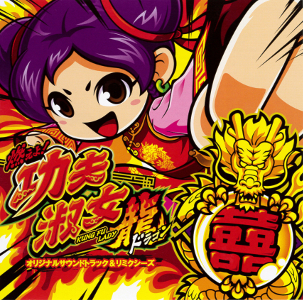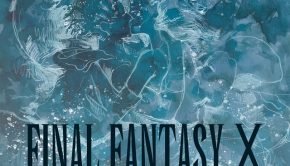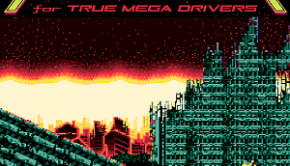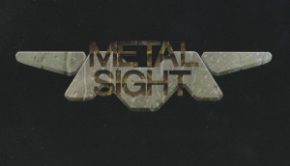Moeyo! Kung-Fu Lady Dragon Original Soundtrack & Remixes
 |
Album Title: Moeyo! Kung-Fu Lady Dragon Original Soundtrack & Remixes |
| Record Label: inisJ / SONAS RECORDS. |
|
| Catalog No.: SRCD-001 |
|
| Release Date: February 24, 2018 |
|
| Purchase: Buy Used Copy – Event Only Item |
Overview
The Moeyo! Kung-Fu Lady Dragon Original Soundtrack & Remixes album was an event only release earlier this year. Featuring the Yamasa Soundteam as well as a plethora of game music veterans, including Hiroyuki Kawada, members of Supersweep, TECHNOuchi (alias of Yuji Takenouchi), Junya Nakano, among others, this album includes both the soundtrack to the pachislot game of the same name as well as a variety of remixes of said music by many of the same contributors to the same soundtrack, with additions by Akari Kaida, Masafumi Takada, Tetsuya Shibata, and others. How does this combo release fare and is it worth looking into?
Body
The first disc is comprised of the actual soundtrack to the pachislot game. Opening with “Kung-Fu RUSH BONUS [STAND UP! Kung-Fu Girl], the vocal tune, sung by Haruka Shimotsuki, blends rock with an Asian instrument palette comprising of shamisen, erhu, and dulcimer. It’s an extremely catchy melody, particularly in the chorus, and the aesthetic of the piece really helps set the tone for the rest of the soundtrack. The contributions by the Yamasa Sound Team all consist, primarily, of a medley of tunes that incorporate the melody of the vocal tune, among others, and provide a nice blend of rock and Asian instrumentation, while also adding some synth and jazz tones as well. The nature of the tunes is a bit disruptive, due to how they are mixed, but the end result is still fairly enjoyable overall and all are full of energy.
The other tunes on the first disc are all compositions by guest composers. “STAND UP! Kung-Fu Girl (yi-er-san-si mix), done by Hiroyuki Kawada, takes the opening vocal and adds a minimalist electronic flair to it, transforming it into a somewhat bubbly dance tune that retains the Japanese feel of the original. COSIO’s “Time of Trials (Hard Kung-Fu Mix) is a hard dance rendition of the tune it remixes. Soft Japanese instrumentation (woodwinds, mallet instrumentation) serve as an interesting juxtaposition to the heavy hitting sound, but ultimately, the piece falls a bit flat. TECHNOuchi’s “Kung-Fu Battle (Mystic Mix)” takes the original tune and turns it into a funky disco/house tune incorporating electric and bass guitar in engaging ways while also utilizing the source material to great effect. In addition, there is also a great flute solo and lots of dreamy synths, resulting in a piece that is extremely fun. Last of the big remixes on the original soundtrack is TAMAYO’s “Big Bonus (TechnoPop Mix),” a technopop tune with a retro feel. There is some excellent synth usage, subtle incorporation of Japanese instrumentation, with the melody taking center stage most of the tune. In the end, it’s an enjoyable remix.
Following those more substantial tunes are a series of shorter tunes. “Kung-Fu Bonus (Challenge)” is a superficial tune with synth and Japanese elements with an electronic tone. “ART High Chance (Mind)” incorporates male chanting, shamisen, rock elements with a similar approach to “ART High Chance (Body)”. It’s a catchy, yet simple tune that feels “traditional” with a modern twist. “ART High Chance (Skill)” is a fun tune that blends dance beats with Middle Eastern flair while “ART Double High Chance” has a pop-synth techno sound. It’s a fun tune but certainly superficial. “Big Eaters Tournament” blends shamisen, chiptune, rock, funk, and Japanese instrumentation together for an intense and fun listen. Tunes like “Extinguish the Candle,” with its synth, dance beats, and Japanese instrumentation, and “Chase” with its blend of Middle Eastern and Japanese soundscapes are decent tunes, but hardly standout among the more impressive tunes on the soundtrack. Both of TECHNOuchi’s shorter tunes, “Cicada Sound Training” and “Ending” are excellent soundscapes and tunes overall. The former blends rock, ethereal synthesizer, and traditional Japanese instrumentation to create an excellent atmosphere and an engaging tune, even if there isn’t a prominent melody. The latter is absolutely stunning. Ethereal synths meet Japanese instrumentation and vocal samples. In addition, it uses an earlier original tune by TECHNOuchi called “Colors” as a base.
AKANE’s “Kung-Fu RUSH [Goddess of Beauty] (Episode)” incorporates vocal samples, light electronic tones, with plenty of Japanese instrumentation, with a major woodwind focus, to create an engaging and hypnotizing tune while “Kung-Fu [Evil Dragon Grandmaster] (After-Battle Conversation Scene),” by Norio Nakagata, blends shamisen and electronica to create a tense tune with a melody that is both catchy and beautiful. Denji Sano’s “High Chance Stage (Seiryuu Door)” has a retro feel among its synth and bumping beats that is engaging, fun, and tense. “Kung-Fu Roulette,” by TECHNOuchi, is a house tune with Japanese instrumentation, strings, and a jazz vibe. It’s a fun, bubbly tune. There are also two extra tracks as well. “Extra Track 1,” by Junya Nakano, is a tune with a catchy melody with some light dance elements that focuses on shamisen while “Extra Track 2,” by Ayako Saso is a raver with an exotic Middle Eastern aesthetic to it. The warped melody adds a nice touch as well.
The second disc featurse 15 remixes from the non-Yamasa Sound Team contributions and covers a wide array of styles, mostly electronic, that still keep the original intentions, soundscape wise, of the music. Opening with Kenichiro Fukui’s “Dusk Sprint – Kung-Fu Rush [Goddess of Beauty] (Episode) Techno Mix,” the remix has techno beats that blen with warm synths, exotic vocal samples, and Japanese instrumentation, typically relegated as an accompaniment. It’s a bubbly, somewhat ethereal, remix with lovely synth solo, supported by some disco-like strings, at times. Junya Nakano’s “Das Neue Japanische Latin Volkslied – Kung-Fu Roulette Dolphin Mix” opens with dolphin sound effects and additional seaside sound effects throughout the entire tune while also featuring soft jazzy piano chords, a calm and relaxing aesthetic, and the Japanese sound of the original melody retained before transforming into a wonderful blend of glitchy electronics, great rhythm, and excellent melody manipulation. The end result is a stunningly beautiful atmosphere and an outstanding remix. J99, an alias of Takayuki Aihara, and his remix “Reincarnated – Kung-Fu Bonus (Hyper) Jam Mix,” is a groovy funk tune that gives off a jam session vibe. It blends the aforementioned funk with the Japanese elements of the original, and in some ways, reminds me of a Persona 5-esque sound with its plentiful bass work and chill vibe.
Masafumi Takada’s “Eating Pleasure – Big Eaters’ Tournament RX-Ver.S.P.L.” is much like something you might hear in a DanganRonpa game. It’s a dynamically tempoed piece that blends Japanese instrumentation, chiptune, glitchy electronic tones, some dubstep elements, and vocal samples into an extremely fun piece with an exotic and heavy sound and a wonderfully beautiful atmosphere to boot. Nobuyoshi Sano, under his sanodg alias, and his “Shadow – Extinguishing the Candle sanodg mix” blends the Japanese instruments and aesthetic of the original tune with a trap influence. It’s quite chill with a great soundscape and the shakuhachi and trap elements complement each other quite nicely. As it progresses, it becomes a bit less original with a broad EDM appraoch, but certainly manages to provide a fun listen and feature a high energy sound. Hiroki Kikuta’s “Gravity – High Chance Stage (Seiryuu Door) Emergency mix” opens up with a menacing siren and a tense sound before moving into a rock remix that has a modern Secret of Mana/Soukaigi sound with synthesizers. However, it’s a fairly safe remix, although largely enjoyable, however, the sections that feature the “emergency alert” sirens, are absolute unnecessary and definitely dampen the overall remix.
Akari Kaida contributes fantastic house remix with “The Sun Goddess’ Grandson Descends – Kung-Fu RUSH [Evil Dragon Grandmaster] (Post-Battle Conversation Scene) yAsHagO Mix.” It is jazzy, has a lounge vibe, and the blend of piano, mallet percussion, strings, and vocals create a wonderful atmosphere that is a joy to listen to and is one of my favorites on the remix side. Ayako Saso, under her SamplingMasters AYA alias, contributes “The Smoked Hen Egg at the Mountain Where the Elderly Are Abandoned – ART High Chance (Mind) Maturational Egg Mix,” done in her typical high energy rave style with some dynamism, blending vocal samples, Japanese instrumentation, and synth manipulations. In addition, there are some dubstep elements added to the mix, which contrast nicely with the beautiful piano, synth, and oddly enough, Celtic influence, in these sections. It’s a diverse piece and while it does follow her typical approach, it’s certainly well executed. Keiichi Sugiyama’s “Snake Charmer – Extra Track 2 Spice Mix” is an electronic remix fusing EDM beats, glitchy synths, chiptune, and distortion, although it is rather underwhelming compared to much of the disc.
SamplingMasters MEGA, an alias of Shinji Hosoe, does a remix “Invincible Flower – Extra Track 3 Burdock Mix” is another dynamic piece blending hard dance/techno sounds, peppered with trance. The end result is a tune with an excellent synergy between the melody, instrumentation utilized, tempo, and accompanying electronic elements. The more serene sections with piano also stand out. It is an absolutely wonderful tune and one of the best remixes on the album. Tetsuya Shibata’s “linguinetion – ART High Chance (Skill) Hardcore Mix” blends the Middle Eastern sounds of the original with synth, scratching, and rock elements. The super catchy focus on melody is a plus and it has a Devil May Cry sound at times with more EDM influence in others. AJURIKA tackle’s TECHNOuchi’s ending theme with his “Colors – Ending AJURIKA Remix” contribution. It takes the original and turns it into a dubstep style tune. The contrast is absolutely striking, juxtaposing the crisp piano tune with the harsh synths. It works stunningly well and still retains the beautiful of the original as it isn’t aiming for a DJ/club vibe. Like Kikuta, however, it is a bit safe and those who dislike the harsh tones of the wobbled synth will probably be turned off to this tune as well.
Shohei Tsuchiya’s “coriander splash – ART Double High Chance 666 Mix” has a jazzy R&B feel to it. Jazzy piano and jazz flute certainly contribute to the overall lounge vibe that the piece gives off, with the vocal samples only accentuating this atmosphere. There is an excellent rhythm to the piece, and although there is some brass noodling, it isn’t a major focus, relegating itself to the background. It’s a very chill remix but might not be everyone’s cup of tea. The showerheadz (Kou Hayashi) remix, “Revival of the Ninja – Extra Track 4 HAGAKURE Mix,” blends ethereal synths with a more techno sound and a Japanese soundscape, giving off wonderful k.h.d.n, his former unit, vibes. As the piece progresses, it becomes a bit more club-like in approach, transitions to a hard techno style with a somewhat 90s dance feel, making it feel like it would belong nicely in the underground club scene at the time. Lastly, TECHNOuchi’s “Frog Kagura – Extra Track 1 Mystic Mix,” is another atmospheric wonder will plenty of layered sounds. Jazzy chords, hammer dulcimer, synthesizer, and erhu, especially in the spotlight, all come together cohesively to form an excellent electronic tune that really captures the spirit of the original.
Summary
Surprisingly, the Moeyo! Kung-Fu Lady Dragon Original Soundtrack & Remixes release is quite solid. The original soundtrack form is largely positive, although it does have its more flashy and superficial tunes, but the contributions from both Yamasa Sound Team and the guest composers manage to remain mainly cohesive in terms of instrumentation. However, the true gem is the second disc, full of remixes. With only a couple remixes that fail to stand out, the overall quality of the remixes is quite high. Largely electronic and featuring plenty of classic composers, some trying different things from their regular career style, the end result is one that is absolutely worth a listen. If you are able to get your hand on the album, I’d highly recommend it.
Do you agree with the review and score? Let us know in the comments below!
4.5
Posted on July 17, 2018 by Don Kotowski. Last modified on July 17, 2018.














